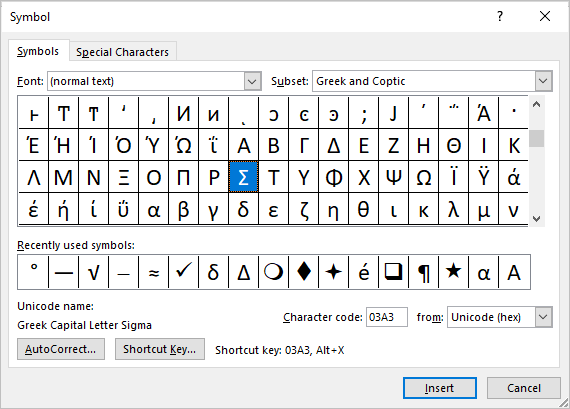

I corrected this, saved the datasheet and reopened in normal form view. Inserting math equations is one of the most important features of Word 2013. I went into the datasheet's design view and noticed that little green marker that appears when a textbox has an invalid Control Source name. Then Alt+F9 to reveal field codes and, within your field, replace CreateDate with the name of your bookmark. Then generate the complex date field using Woodman's Add-In. When opening in the form, it silently failed (so I had no idea of the problem cause) and the Sum's at the bottom of the columns were blank. Pick your bookmark name for the ASK field and generate that field. Source" to match the new column name, but I hadn't. What I thought I'd done, was also rename the textbox "Control

Then today, after making some changes to the datasheet's "Record Source" SQL (I renamed a column) and as a result my Sum totals appear blank (as I discovered later). The datasheet has totals (Sum) and everything has been working fine, and I'mĬontinuing to develop this particular database application. (I do it that way so I can have search boxes on my main form that apply a custom filter to my datasheet). I have a form that has a datasheet subform embedded in it. It's certainly quicker than rebuilding the form which is what I had to do last time.
#Sum form fields in word 2013 Patch
I went back and forth, Nulling the fields and adding back in values (even blanks) and every time the Totals row SUM function would show nothing if either of these two fields had even a single record with wasn't null.ĭoes anyone know if there is a patch or fix to this issue? Oh, and the SUM fails for all numeric columns in the datasheet, not just one. If both are updated to NULL, then the SUM returns the proper calculation/result. Here's what I found: if either of these two fields (both nvarchar(255) datatype fields) contain any non-NULL data, then the Totals SUM function shows nothing. That had been updated, setting all of the fields for 2 of them to NULL didn't fix the issue but, no so with the other 2 fields. field codes, locking fields, and other common tasks, see Insert, edit, and view fields in Word. Note: For detailed information about inserting and editing field codes, using switches, setting and changing properties, displaying results vs.
#Sum form fields in word 2013 code
I then started comparing an older db with the same data and found that a couple of the text fields had been updated by a user, so one by one I set the changed fields back to NULL for those records where the user had added information. Follow the link to the field code you're interested in, in the alphabetized list below. All were valid, numeric, non-null values. The column(s) to be calculated, but there wasn't. At first I thought there was a problem with the data in The data can be group by, let's call it "an order".įor one order the Totals row works and shows the SUM of the above corresponding column yet for another order the SUM doesn't return any value (but average, count and the other functions do).

The table consists of fields of both nvarchar and money datatypes. The subforms rowsource is set via vba as Table.* and the form has a handful of objects to provide filters for the subform. A updatable subform which links to an SQL table is shown in datasheet view in Access 2013.


 0 kommentar(er)
0 kommentar(er)
